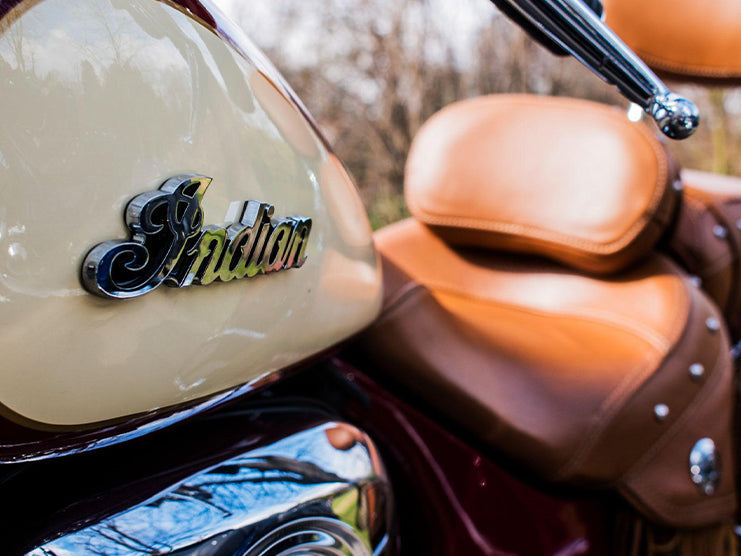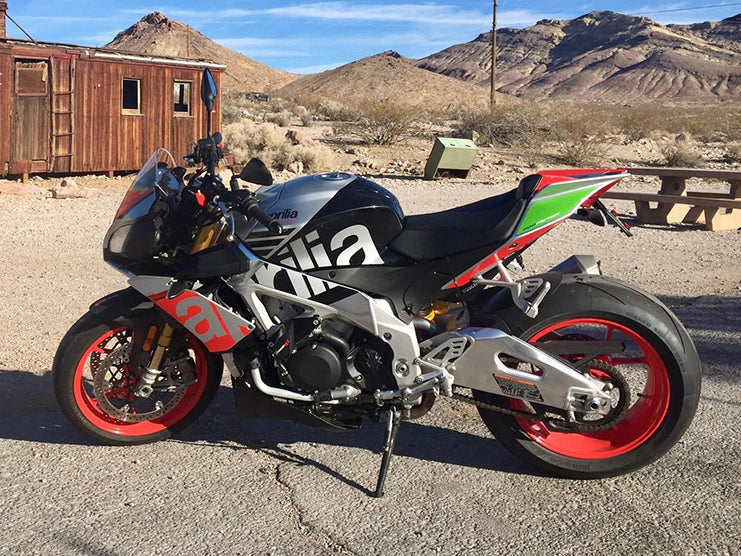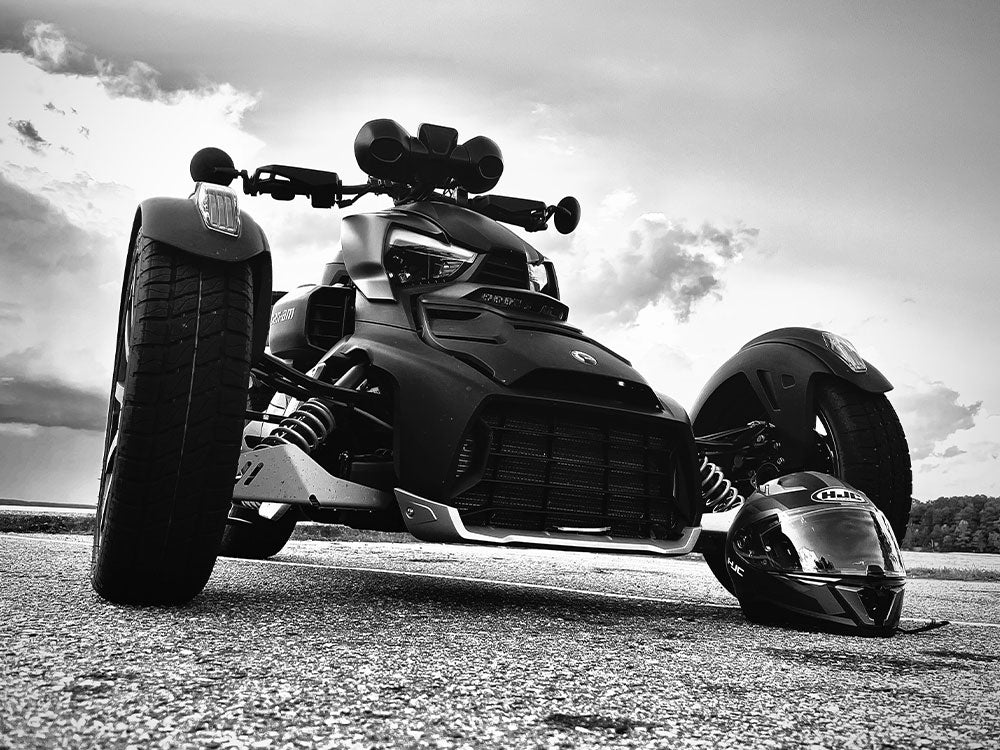Table of Content
Indian Motorcycle is one of the oldest motorcycle brands, specializing in producing old-school cruisers, touring bikes, and baggers. It is one of the toughest competitors of Harley Davidson as both are established American motorcycle brands. However, Indian Motorcycle has undergone several financial instabilities, bankruptcies, and revivals. It was finally revived and uplifted by Polaris Industries who took the company to its present state. Started by producing bicycles, Indian Motorcycle today produces one of the most reliable and elegantly designed motorcycles. Read this article to learn about the remarkable history of Indian Motorcycles.
1. The Remarkable History of Indian Motorcycle
1897
1.1 Establishing Hendee Manufacturing Company
The Indian Motorcycle history dates back to 1897 when George Hendee, the founder, and Oscar Hedstrom, the chief engineer and co-founder, started a bicycle production company, Hendee Manufacturing Company. Hendee was a bicycle racer and a manufacturer. He was eager to build gas-powered motorcycles one day.
1900
Oscar Hedstrom is considered one of the pioneers who played a huge role in laying the foundation of America’s first motorcycle company. in addition to being an engineer and manufacturer, he was also an endurance rider. He joined the Hendee Manufacturing Company in 1900 as a co-founder.
1901
1.2 Manufacturing First Gas-Powered Bicycle
1901 was the year that laid the foundation of Indian Motorcycle and earned it a reputation as a motorcycle company. The same year, Hendee and Hedstrom paired to produce the first gas-powered bicycle. Their experiment was successful, leading Indian Motorcycle to open its first factory in downtown Springfield, Massachusetts.
The motorcycle produced was fitted with a single-cylinder engine capable of producing horsepower of 1.75 hp. It turned out to be a great success as the sales increased tremendously. Two production motorcycles, built around the diamond-style frame, were also produced and tested in the same year.
Indian Motorcycle outsourced the production of its motorcycle engines to Aurora Firm, Illinois. However, the design was provided by Indian Motorcycle and Aurora had to seek permission and pay a fee while selling engines to third parties.
1902
Hendee and Hedstrom were successful in producing chain-driven motorcycles, having a streamlined design. A good number of these motorcycles were produced to sell to the public.
1903
1.3 Hedstrom World Record
Along with his passion for manufacturing motorcycles, Oscar Hedstrom was an enthusiastic rider. In 1903, on the occasion of the company’s reliability test, he set a world record for attaining the fastest speed of 56 mph on an Indian motorcycle.
1904
In 1904, the dark red color became the official trademark color of Indian Motorcycle.
1905
Indian Motorcycle was successful in producing the V-Twin Factory Racer which turned out to be a great motorcycle for racing and record-breaking.
1906
1.4 Reliability Test
Following the successful reliability trial of Indian motorcycles, in 1906, Louis J. Mueller and George Holden, Indian Motorcycle dealers, went on a long-distance trip, starting from San Francisco to New York City, and completed their trip in 31 days without any breakdown or mechanical issues.
1.5 First V-Twin Factory Racer Motorcycle

In 1907, the company produced a street version of the V-Twin Factory Racer, known as the Roadster fitted with a twisted-grip throttle.
1907
The contract between the Indian Motorcycle and Aurora Firm ended in 1907, and Indian Motorcycle started to manufacture engines for its motorcycles.
1910s
During the 1910s, the Indian Motorcycle became the world’s largest motorcycle producer and the most popular and high-selling models were the Indian Scout and the Indian Chief.
1911
Another tremendous record was set by the Indian Motorcycle when the team won the 1911 Isle of Man Tourist Trophy by securing the first three spots.
1.6 Resignation of Founder and Co-Founder
1913
The co-founder decided to say goodbye to Hendee Manufacturing Company in 1913. On the other hand, the sales of Indian motorcycles jumped from 500 units per year to 32,000 per year in 1913.
1.7 Indian Motorcycle and the U.S. Army
Due to being popular, reliable, and sturdy, the Indian motorcycles were also used for military purposes by the U.S. Army.
1914
1.8 Erwin “Cannon Ball” Baker Setting Records for Indian Motorcycle
In 1914, Erwin Baker, who was one of the Indian Motorcycle’s brand ambassadors and a long-distance rider traveled from San Diego to the East Coast in a record-breaking time of 11 days, 12 hours, and 10 minutes, emphasizing the reliability and robustness of Indian motorcycles.
1915
In 1915, Hendee decided to step down as the general manager of the company, but he continued working as the president.
1.9 Erwin Baker Setting Another Record
Erwin Baker achieved another milestone for Indian Motorcycle by traveling from Canada to Mexico via California in only three and a half days.
1916
Shortly after Hendee’s retirement as a general manager, he also resigned as the president of Hendee Manufacturing Company in 1916.
1917-1919
1.10 Indian Motorcycle and World War I

Indian Motorcycle stood firm with the U.S. army during the war times and delivered a major part of its production to the soldiers as World War I started. Despite the drop in retail sales due to the lack of inventory, the company continued to assist the troops in tough times. Indian Motorcycle provided approximately 50,000 units to the U.S. Army in two years. Most of the Indian military motorcycles’ engines were based on the Powerplus engine.
1920
1.11 Introduction of the Indian Scout

In 1920, one of the most popular Indian motorcycles was introduced to the world, the Indian Scout. This motorcycle did not have a chain or belt, instead, it used gears to drive the rear wheel. The Indian Scout was powered by a 610 cc (37 cu in) engine. It was a fast, reliable, and appealing motorcycle that attracted many new riders.
1922
1.12 Introduction of the Indian Chief

Following the success of the Indian Scout, another popular motorcycle, the Indian Chief was introduced in 1922. This motorcycle was fitted with a 1,000 cc (61 cu in) engine.
1923
In 1923, the engineers at Indian Motorcycle redesigned the engine installed in the Indian Chief to make it 1,200 cc (73 cu in). Also, in 1923, the name of the company was changed from Hendee Manufacturing Company to Indian Motorcycle Company.
1927
1.13 Introduction of the Indian Scout 45
In 1927, Indian Motorcycle also introduced an upgraded version of the Indian Scout, known as the Indian Scout 45 powered by a 740 cc (45 cu in) to compete with the Excelsior Super X, one of the most popular motorcycles of its era.
1.14 Introduction of the Indian Ace
In 1927, Indian Motorcycle decided to expand and purchase the Ace Motor Corporation and moved the production to the Springfield factory. The company started marketing the four-cylinder Ace motorcycle as the Indian Ace. This motorcycle became a popular Indian model like the Scout and Chief.
1928
After Indian Motorcycle acquired Ace Motor, it also hired the Chief Engineer formerly working at Ace who designed the Indian 401, which replaced the Indian Ace.
In 1928, several upgrades were made to the Indian Chief, including the installation of a front brake.
1.15 Indian Scout Upgrades
Another upgrade was made to the Indian Scout and the model was replaced by the Indian 101 Scout, designed by Charles B. Franklin. It had a lower seat height and a longer wheelbase for better handling, maneuverability, and comfort.
1929
1.16 Indian 402

In 1929, the Indian 401 was replaced by the Indian 402 with a stronger frame and five-bearing crankshaft.
1930
1.17 E-Paul DuPont’s Era
A notable businessman, E. Paul DuPont decided to invest in Indian Motorcycle Company. He sold most of his shares in the DuPont Automobile Company and bought a considerable amount of Indian Motorcycle’s shares. He was optimistic about the potential of this company. After taking control, E. Paul did a great shuffle in the company’s management and appointed Joe Hosley as the operations in-charge. It turned out to be the right decision as the company grew in size under his supervision.
1936
Indian Motorcycle continued producing the Indian Four, which was derived from the Indian Ace, even in times of severe recession, commonly known as the Great Depression period.
1937
As the focus of American motorcycling shifted toward track racing, Indian Motorcycle also tried its luck in the first Daytona 200 race. A famous racer, Ed Kretz participated in this race on the Indian Sport Scout and secured first position.
1940-1945
1.18 Indian Motorcycle and World War II

As the U.S. again became a part of the global conflict in World War II, Indian Motorcycle stood again for the country and produced motorcycles to assist the troops. This time, the company also supplied motorcycles to the allies. Indian Motorcycle started producing military motorcycles in 1940, solely for France.
1941
Later, in 1941, Indian Motorcycle started producing the Indian 841 military model for the U.S. Army. During the span of World War II, Indian Motorcycle produced and delivered $24 million worth of motorcycles and spare parts to the U.S. Army and its allies.
1942
In 1942, the popular Indian Four motorcycle was discontinued.
1.19 Post-World War II Decline
1945
In 1945, DuPont handed over the control of Indian Motorcycle to Ralph B. Rogers who bought major shares of the company.
1946
Under Rogers’ control, the company continued with the production of only one model, the Indian Chief.
1947
In 1947, designers included a light on the large front fender of the Indian motorcycle that became famous as the War Bonnet.
1948
In 1948, two import models were introduced in the market, the CZ125b by Czech and the Corgi Scooter by Brockhouse Engineering. The company also produced race versions of Indian Scout in small numbers.
1949
In 1949, the Indian Scout Chief was discontinued as the focus was shifted to producing small-engine motorcycles domestically, including the Indian 149 Arrow powered by a 220 cc single-cylinder engine, and the Indian 249 Scout, powered by a 440 cc twin-cylinder engine.
1950
In 1950, the Indian Chief was brought back to production, along with the Indian Warrior, fitted with a 500 cc twin-cylinder engine.
1952
Brockhouse Engineering Era
Roger had to leave his job at Indian Motorcycle to start his new career at Texas Instrument. Therefore, he handed over the control of the company to John Brockhouse, the owner of Brockhouse Engineering. The change of management proved catastrophic to Indian Motorcycles and the operations were almost seized in 1952.
1953
The production of Indian motorcycles completely stopped in 1953.
1955
In 1955, Brockhouse Engineering purchased the rights of using Indian as the brand name. The company started selling imported Royal Enfield motorcycles with the Indian moniker.
1960
Associated Motorcycle Company (1960-1963)
In 1960, Brockhouse Engineering sold the business to the Associated Motorcycle Company which also failed to uplift the already dying company.
1963
Floyd Clymer
Another industry leader, Floyd Clymer, who was a pioneer of the motorcycling industry tried his luck to revive the company. He continued selling British motorbikes, mainly Royal Enfield motorcycles under the Indian brand name after little modifications.
1967
Burt Munro Setting the High-Speed Record
During the fiasco, a 68-year-old motorcyclist from New Zealand made history in the motorcycling world by setting a new high-speed record of 184.087 mph. The unofficial top speed was recorded to be 205.67 mph. He used a modified 1920 Indian Scout Streamliner to making this record in Utah. In 2006, Burt Munro was inducted into the American Motorcyclist Association (AMA) Hall of Fame.
1970
After Clymer died in 1970, his attorney, Alan Newman took over the control and continued selling small motorbikes with the Indian badges.
1977
Indian Motorcycle was unable to survive and the operations were completely seized again in 1977 due to bankruptcy.
1998
The year 1998 marks the formation of the Indian Motorcycle Company of America (IMCA) to Revive Indian Motorcycle.
Almost nine companies merged to form the IMCA with the manufacturing facility in Gilroy, California, to revive Indian Motorcycles and produce original Indian Scout and Chief models.
2003
Even a large-scale merger of nine companies (IMCA) did not work and the motorcycle company went bankrupt in 2003.
2006
Stellican Era
In 2006, a British company Stellican Limited purchased most shares of the Indian Motorcycle Company and shifted it to North Carolina. The company started producing the Indian Scout models in limited numbers.
2011
1.20 Acquisition by Polaris Industries
Finally, Polaris Industries acquired the Indian Motorcycle Company in 2011 and with sheer excellence and dedication, Indian Motorcycle has regained the lost reputation and revived in the true sense.
2013
Thunder Stroke 111 V-Twin Engine
In 2013, Polaris Industries decided to launch all-new Indian motorcycles with conventional design, styling, and modern performance with a newly introduced Thunder Stroke 111 V-Twin engine.
2014
Introduction of Indian Chief Models
In 2014, several new models were launched, including the Indian Chief Classic, the Indian Chief Vintage, and the Indian Chieftain. These motorcycles are powerful, classic, iconic, and are incorporated with several modern rider-aids, including ABS, cruise control, and electronic fuel injection (EFI).
2015
Indian Scout
The legendary Indian Scout was displayed in the 2014 Sturgis Rally and was introduced in 2015. It is a cruiser, powered by a 1,133 cc V-Twin engine, and it became immensely popular among motorcycle enthusiasts.
Indian Roadmaster
The Indian Roadmaster was also displayed to the public in the 2014 Sturgis Rally and was launched as a 2015 model. Like the Indian Chieftain, this motorcycle is also a heavyweight touring bike with a rear trunk, passenger floorboards, crash bars, heated grips, and heated seats.
2016
Indian Springfield
The Indian Springfield is named after the first Indian Motorcycle factory in Springfield, Massachusetts. It was introduced in 2016 Daytona Bike Week. The Indian Springfield is a classic and heavyweight cruiser, fitted with large skirt fenders, saddlebags, and chrome headlight nacelle.
Indian Scout Sixty
The Indian Scout Sixty is a smaller version of the Indian Scout, powered by a 999 cc V-Twin engine. It was launched in 2015 as the 2016 model.
Indian Chief Dark Horse
The Indian Chief Dark Horse was also launched in 2015 as the 2016 model year. It was completely painted in black to give it an exclusive look.
2018
Another notable variant of the Indian Scout, the Indian Scout Bobber was introduced in 2018, inspired by a bobber.
2019
Indian FTR
The Indian FTR was launched in 2019 in the standard motorcycle category and is inspired by the Indian heritage of flat-track racing.
2020
The Indian Challenger was introduced in 2020 as the first bagger motorcycle in the Indian lineup with a frame-mounted front fairing.
2023
1.21 Current Lineup
| Indian Motorcycle | |||||
|---|---|---|---|---|---|
| Founders | George M. Hendee Oscar Hedstrom |
||||
| Founded In | 1901 | ||||
| Discontinued In | 1953 | ||||
| Owned By | Polaris Inc. | ||||
| Revived In | 2011 | ||||
| CEO | Michael T. Speetzen | ||||
| Headquarters | Medina, Minnesota, U.S. | ||||
| 2023 Indian Motorcycle Lineup | |||||
|---|---|---|---|---|---|
| Standard | Cruiser | Bagger | Touring | Elite | Electric |
| Indian FTR (Starting at $13,499) |
Indian Scout (Starting at $10,749) Indian Chief (Starting at $14,999) |
Indian Super Chief (Starting at $18,999) Indian Springfield (Starting at $22,499) Indian Chieftain (Starting at $22,999) Indian Challenger (Starting at $24,999) |
Indian Roadmaster (Starting at $31,499) Indian Pursuit (Starting at $30,999) |
Indian Pursuit Elite (Starting at $39,999) Indian Chieftain Elite (Starting at $35,499) Indian Challenger Elite (Starting at $35,999) |
Indian eFTR Youth Bike (Starting at $529.99) Indian eFTR Hooligan 1.2 (Starting at $3,599.99) |
2. Wrap-Up
Indian Motorcycle Company is the oldest American motorcycle manufacturer, founded in 1897. The company turned out to be a great success when it started manufacturing motorcycles, particularly the Indian Scout and the Indian Chief were the top sellers. Indian Motorcycle was doing great until it went through the World Wars and the Great Depression phase. However, it stood strong with the country by producing thousands of motorcycles for the U.S. Army and allies despite the lack of resources and inventory. The original Indian motorcycle production was completely stopped in 1953, and the company was unable to revive again until Polaris acquired it in 2011. Under Polaris's supervision, Indian Motorcycle witnessed exponential growth and popularity, becoming one of the top American motorcycle brands.
When it comes to long-distance riding and touring, Indian motorcycles are a preferred choice of Americans. The aftermarket parts are also readily available if you want to customize your Indian motorcycle. Viking Bags has a wide range of premium-quality luggage options available at its online store, including saddlebags. You can visit the website, click on Shop By Bike, and select Indian when you will find almost every Indian model, including the Indian Scout, Scout Sixty, Chief Darkhorse, Chief Classic, Indian Vintage, Chief Vintage, Vintage Dark Horse, etc.
You can also find useful add-ons to install on your motorcycle, including fairings, crash bars, sissy bars, and backrests to further improve your comfort while touring.













Leave a comment
All comments are moderated before being published.
This site is protected by hCaptcha and the hCaptcha Privacy Policy and Terms of Service apply.